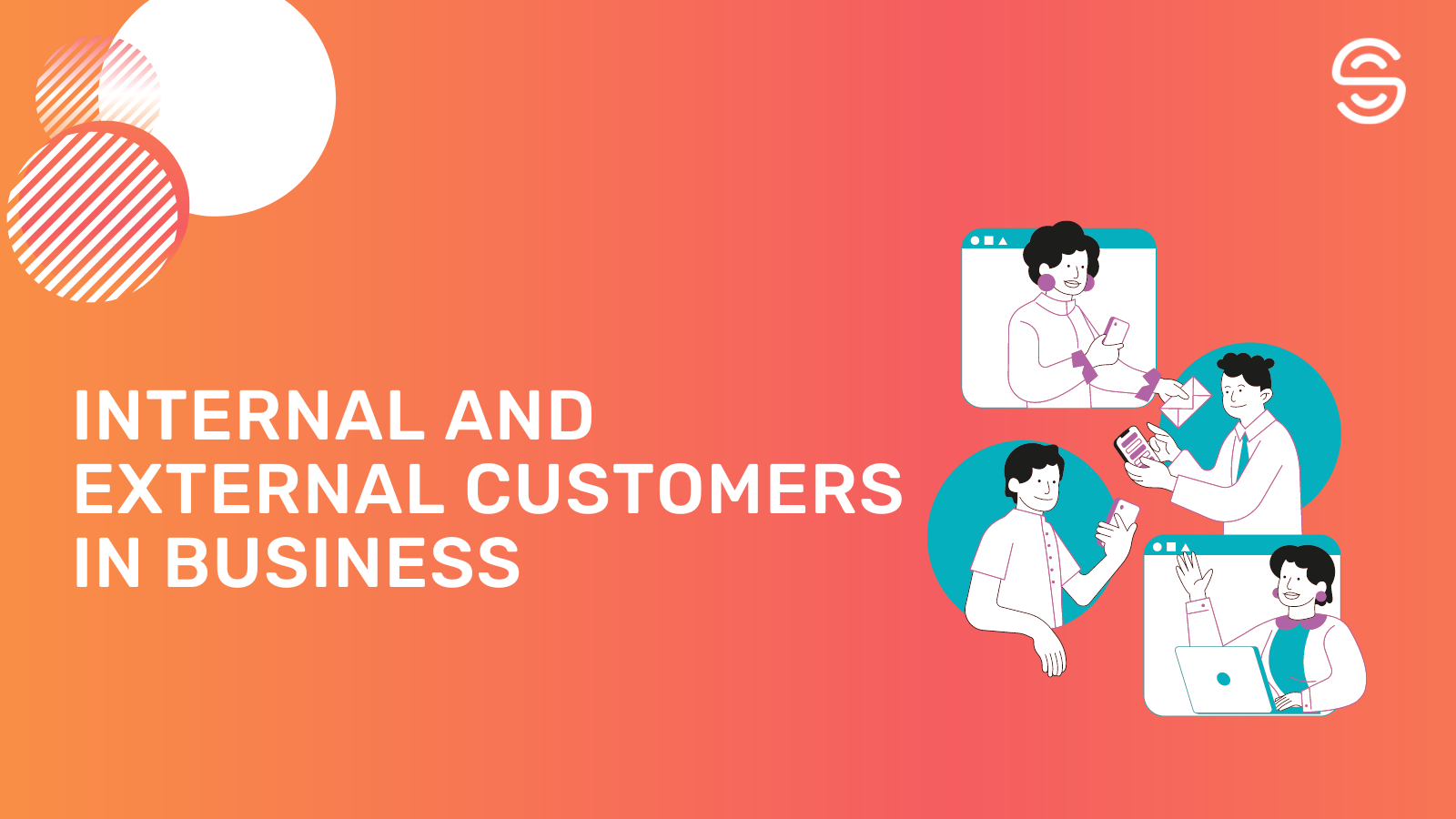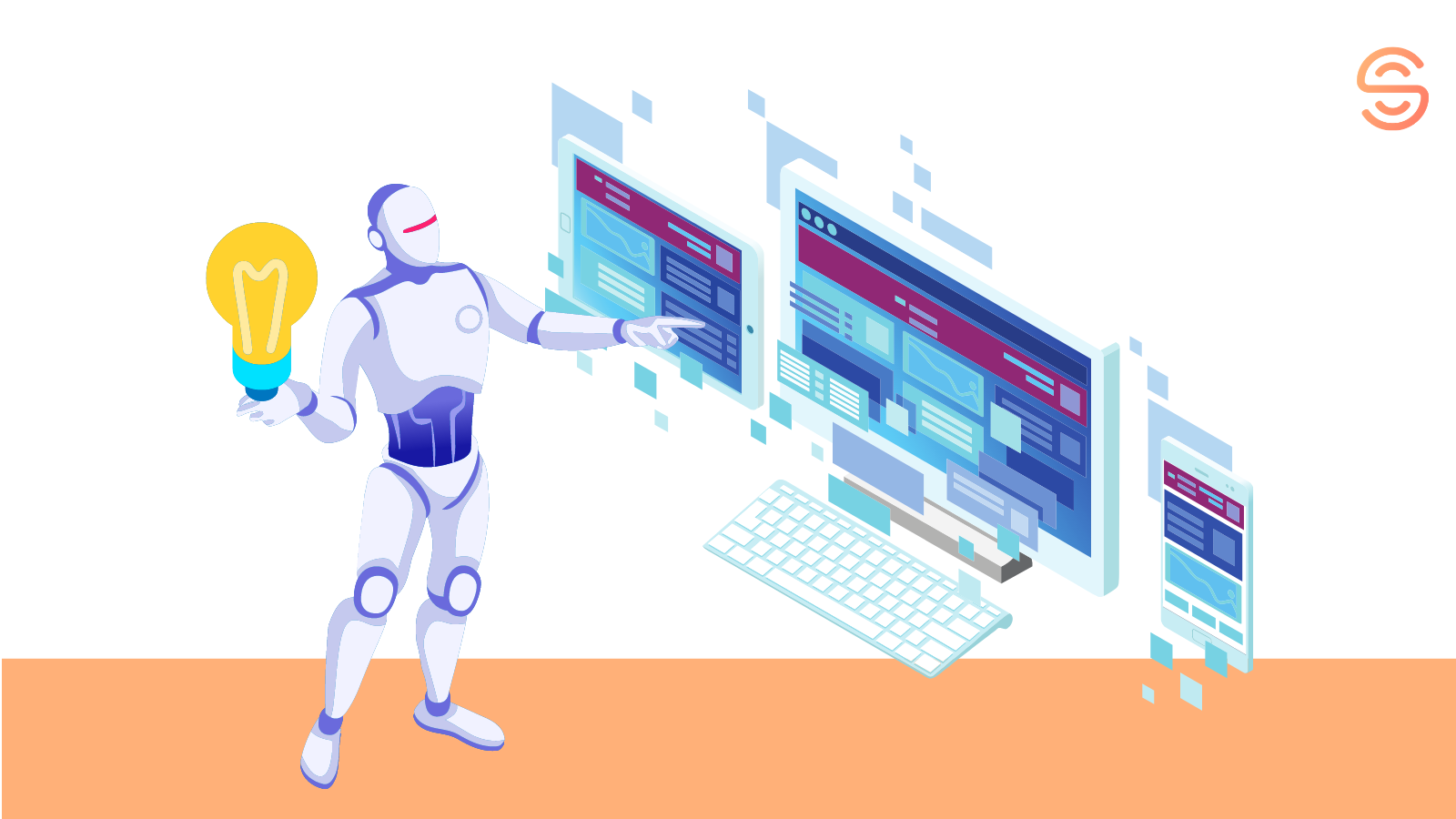- What is an Internal Customer and an External Customer?
- Key Differences Between Internal and External Customers
- Challenges and Opportunities in Customer Management
- How to Engage Internal Customers
- Facilitating Effective Communication Channels
- Promoting a Culture of Openness
- Mastering Active Listening
- Internal Communication and Customer Engagement
Internal and External Customers in Business
February 2, 2024 5 min. read

Contents:
Try AI-Driven Insights
Monitoring for Free
Discover new business ideas and growth opportunities using
our AI-powered insights monitoring tool
Welcome to the heartbeat of business harmony. In this article, we’re unraveling the tale of two essential players in the business game: your internal customers (aka your work buddies) and your external customers (the awesome people buying your products). Why does this duo matter? Understanding and connecting with both sides is like having a superpower in the business world.
Think of your internal customers as the folks you work with every day. When everyone’s on the same page and happy, the workplace becomes a hub of creativity and teamwork—wondering how to make this connection even stronger? We’ll explore what techniques are effective when working with internal customers.
Conversely, your external customers, those buying what you offer, hold the key to shaping your products and services into something they can’t resist.
What is an Internal Customer and an External Customer?
What is an internal customer? An internal customer is someone within the organization who depends on the services, information, or support provided by others within the company. These internal customers can take various forms, such as employees from different departments, teams collaborating on projects, or individuals relying on shared resources.
Building and maintaining positive relationships with these internal customers is not just good practice; it’s a strategic move that can enhance workplace dynamics and overall productivity. For example, the IT department may be internal customers to the Human Resources department when they require technical support or assistance with software-related issues.
Positive relationships with internal customers foster a collaborative and supportive work environment. When these internal customers feel valued and heard, they are more likely to go above and beyond in their roles. This positive energy translates into improved productivity, innovation, and, ultimately, a healthier bottom line for the company.
Key Differences Between Internal and External Customers
In the realm of business, understanding the distinction between internal and external customers is pivotal for achieving success. Internal customers, referring to individuals or groups within the organization—such as employees or teams—function as collaborators working towards shared objectives. On the other hand, external customers, encompassing entities external to the organization, include end-users or other businesses engaging with the company’s products or services.
- Internal Customers: These are individuals or groups within the organization, like employees or teams, who play a crucial role in collaborating internally towards shared goals.
- External Customers: These are entities external to the organization, such as end-users or other businesses, who interact with and consume the company’s offerings externally.
Challenges and Opportunities in Customer Management
Internal Customer Dynamics
- Challenges: Navigating communication barriers and resolving conflicting priorities within the organization.
- Opportunities: Cultivating teamwork, establishing clear communication channels, and providing training for improved collaboration among internal customers.
External Customer Dynamics
- Challenges: Addressing diverse expectations, managing market fluctuations, and upholding a positive brand image externally.
- Opportunities: Utilizing customer feedback for enhancement, personalizing experiences through data analytics, and building robust relationships via effective customer service for external customers.
How to Engage Internal Customers
Facilitating Effective Communication Channels
Keeping communication open within a company is super important for making things run smoothly. When information can quickly move between different groups in the company, it helps everyone work together better. This not only makes the work more efficient but also strengthens the connections between people in the company.
Optimal Communication Platforms
Make sure to use communication tools that are easy to use so that everyone can share information easily. These could be project management tools, messaging apps, or collaboration platforms. It’s crucial that everyone in the team can access and use these tools.
Regular Team Meetings and Updates
Also, set up regular meetings to update the team on what’s happening in the company. This way, everyone knows about the company’s goals, any changes, and its achievements. This helps everyone feel like they’re part of a team with a common purpose.
Promoting a Culture of Openness
Encouraging a culture of openness is critical to transparent communication. Create an environment where employees feel comfortable expressing their thoughts and concerns. This enhances the flow of information and fosters a collaborative atmosphere where diverse perspectives are valued.
Cultivating Honesty and Clarity
Promote a culture of honesty and clarity in all communication channels. Openly share information about company decisions, challenges, and successes. This transparent approach not only cultivates a sense of belonging but also enhances the commitment of internal customers to the organization’s goals and values.
Timely and Relevant Information Dissemination
Ensure that information is communicated in a timely fashion and is directly relevant to the roles and responsibilities of internal customers. This practice prevents misunderstandings and ensures everyone is aligned regarding project timelines, goals, and expectations. Keeping information timely and pertinent promotes a cohesive understanding among internal customers, contributing to a more efficient and harmonious working environment.
Mastering Active Listening
Active listening is a transformative skill that holds the potential to elevate internal customer relationships. By genuinely tuning in to internal customers’ needs, concerns, and feedback, organizations can tailor their strategies to address these needs effectively.
Scheduled Feedback Sessions
Incorporate regular feedback sessions into the organizational framework, allowing internal customers to express their thoughts and concerns. Actively listen during these sessions, valuing the feedback received and leveraging it to initiate positive organizational changes. This proactive approach demonstrates a commitment to improvement and strengthens the bond between the organization and its internal customers.
Empathetic Communication Style
Cultivate an empathetic communication style that considers the perspectives and experiences of internal customers. This goes beyond just hearing words – it involves understanding and acknowledging the emotions and needs expressed. By adopting such a communicative approach, organizations forge stronger relationships and contribute to developing a positive workplace culture.
Internal Communication and Customer Engagement
Creating a robust internal customer service framework is vital for a thriving organization. Treating employees as internal customers sets the stage for a collaborative, respectful, and mutually supportive culture. This, in turn, directly influences the satisfaction of external customers. By prioritizing employee well-being and satisfaction, businesses establish a positive environment that ripples outward, enhancing the customer experience.
Investing in internal customer service is not just a short-term strategy; it’s a commitment to the long-term success of a business. Companies that prioritize their employees’ well-being and professional development cultivate a dedicated and motivated workforce. This dedication pays off in terms of increased productivity, higher employee retention rates, and sustained business growth.
A satisfied internal team is pivotal in building and maintaining a positive brand image. Happy employees naturally become brand ambassadors, embodying the values and ethos of the company. A robust internal culture translates into authentic and positive interactions with external customers, contributing to a favorable perception of the brand in the market.
Effective internal communication is the lifeblood of any organization. Ensuring everyone is on the same page and aligned towards common goals directly impacts external customer engagement. A well-informed team is better equipped to address customer needs and concerns promptly and effectively.
The power of an engaged and well-informed internal team cannot be overstated when delivering superior customer service. Deep product and service knowledge and a strong understanding of company values empower employees to provide exceptional customer experiences. This dedication and expertise become a competitive advantage and foster customer loyalty.
